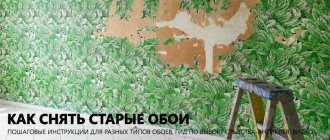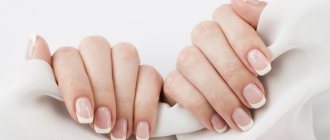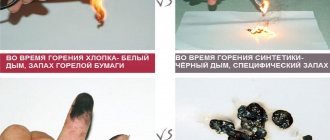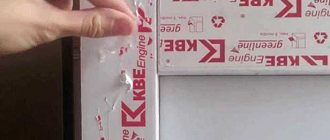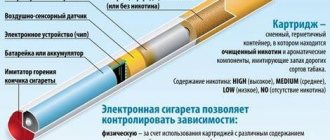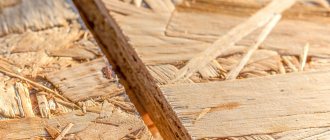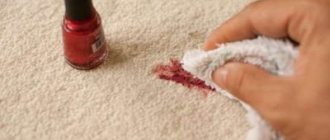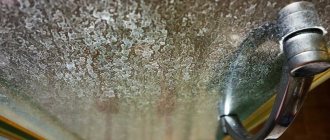Many girls enjoy wearing gel polish so much that it is not surprising that they begin to master the shellac technique at home. And they are not stopped by the fact that high-quality varnishes and decorative elements to create a manicure are sometimes expensive. If you wish, it is not at all difficult to master shellac at home. What do you need for this? This is the main question, because sometimes we simply forget about many necessary things.
You should never forget about the clinser - you will need it both at the stage of nail preparation and to complete the procedure. It makes it easy to degrease the nail at the beginning of the procedure. But many people simply use primer as a cleaner and dehydrator. But at the end of the procedure it will be of no use. It is not used to remove stickiness.
How can you remove the sticky layer of gel polish? Beginners who have bought a topcoat and realized that it leaves a strange stickiness are interested in it. And in general, should this layer be removed, what liquids can remove it, and is it possible to replace them with something at hand? Let's try to understand this issue.
What is the sticky layer and why does it remain?
When performing a manicure at home, enterprising young ladies take into account many points: the quality of the coating itself and accompanying decorative materials, sharpening the working edges of scissors or tweezers, as well as the optimal abrasiveness of the nail file. All this is under the sensitive attention of the craftswoman. The one thing that is often overlooked is removing the sticky layer. No, no, we are not talking about the standard removal of stickiness from the finishing top, but about the dispersion layer of the classic gel.
In order to answer the question asked 100% correctly, it is important to understand what exactly the mixture contained in the shellac bottle consists of. In fact, contrary to popular belief, the entire periodic table is not hidden behind transparent glass walls. Most often, the following ingredients can be seen in the formula:
| Formula Component | Its purpose |
| Plasticizers | Particles of a substance that gives the polymerized gel elasticity and plasticity. Plasticizers are especially important at the moment when there is a mechanical effect on the nail plate. It is the quality of the plasticizer raw material that determines whether the coating will be chipped or not. |
| Polymers | Another mandatory item in the list of ingredients of any gel polish. Polymers are designed to improve durability and increase the degree of adhesive adhesion of natural nail keratin to artificial coating. It is logical that in expensive varnishes the plasticizers are also of higher quality, while in budget ones they are cheaper |
| Solvents | It is a mistake to believe that polymerization is an ordinary process of hardening varnish under a UF or LED lamp. In fact, polymerization is the process of evaporation of solvents from the surface of the coating, due to which it hardens |
| Silicates | An auxiliary ingredient that should also be included in any varnish. Silicates control the degree of pigment settling and prevent the varnish from delaminating; they are also responsible for the overall viscosity of the consistency |
| Titanium dioxide | Another “chemical” ingredient. Essentially, this is a snow-white pigment that is added to almost every gel polish to emphasize the intensity of the original shade. |
| TSF | Perhaps the most “controversial” component of varnish. It is designed to improve the degree of adhesion of the coating and the nail plate, which directly affects the durability of the manicure. But such an additive is safe only in the absence of formaldehyde. Read the ingredients carefully |
| Mica | The component thanks to which we observe a delicate pearl shimmer. Essentially, mica is an accumulation of finely dispersed reflective particles that block direct sunlight or artificial rays |
| Camphor | The same plasticizer, but of natural origin. At the moment, camphor is being removed from use, as it is a powerful allergen. |
This, perhaps, is the entire “base” on the basis of which shellac or gel polish is then formed. Naturally, each of the presented components directly affects the quality of the coating itself, its intensity and durability, but part of the responsibility for this also lies with the master who processes the nail plates. So what is this sticky layer of shellac? Essentially, polymerization is the process of turning a measure into a viscous but liquid consistency, which gradually hardens under UF or LED lighting by evaporating solvents. As a result of this metamorphosis, a sticky layer called a dispersion layer is formed on the hard surface. It is needed for adhesion of materials of different nature. In the case of gel manicure, to increase the adhesive ability of the artificial gel and natural keratin contained in the nails.
In other words, dispersion is a by-product of drying the gel coating, necessary for better bonding of all layers of the gel and the natural nail. And answering the question: “Do I need to remove the sticky layer from the base?” – the answer is clear – “No!” A sticky layer is simply necessary so that all layers of the manicure - base, color and top - adhere well to each other. When removing the dispersion, both from the base and from the color layers, the manicure loses its strength; it chips and peels off from the nail faster.
Nail degreaser
Degreasing nails is a mandatory step in preparing the nail plate for decorative coating, be it gel polish or nail extensions. In this article we will talk about how you can degrease your nails, how to use a degreaser for gel polish and removing the sticky layer, how to choose it and what you can replace it with at home.
Nail degreaser is a special product that is used in manicure to clean the nail plate of dirt and remove the natural shine and fat that forms on the surface of the nail. This solution dries and cleans the nails, so the coating stays on the nails for a long time, without peeling.
Most often you can find a 2 in 1 product on sale: for degreasing nails and removing the sticky layer of gel polish. This allows you to save money, although in reality it is not that expensive and is not used up very quickly, especially if you buy it for use at home.
This implies three main purposes of such a tool:
- Cleaning the nail plate,
- Removing natural shine from nails,
- Removing the dispersion (sticky) layer of gel polish.
Don't confuse degreaser with primer!
Beginners may confuse a degreaser with a primer, bonder, dehydrator or cleanser. I wrote in detail about the differences between these products in the article about nail primer.
In short, yes, the main purpose of using these products is to improve adhesion to the decorative coating. However, primer (acidic or acid-free) and bonder are more professional products and are used for particularly problematic nails (for example, those prone to oiliness) and for extensions, where a more thorough approach is needed. They work on the principle of lifting the scales of the top layer of the nail plate, due to which the material adheres to the nails more securely.
A dehydrator is used only to cleanse nails of moisture and dry them. And the clinser is used only to remove stickiness from the gel polish coating (or the finish when building up).
How to use a degreaser?
Here are some practical tips on how to use the product correctly:
- The degreaser is applied to the nails using a lint-free cloth. This is important, since a regular cotton pad can leave almost invisible lint, which will affect the quality of adhesion of the material to the nail and, accordingly, its wearability. A little life hack: if you don't have lint-free wipes, you can just dry regular wet wipes and cut them into small pieces!
- The product is applied to a clean nail plate after removing the natural gloss with a buff or a grinding file (read about the types of files here).
- After applying the product, it is very important not to touch your nails with your fingers, as they will leave greasy marks (they are invisible, so it is important to know about this) and they will need to be degreased again.
- If you use a detack remover, it is applied after the final topcoat has polymerized.
How to replace degreaser at home
A nail degreasing agent may not always be at hand or you may simply run out at the most inopportune moment. In this case, you can try replacing it with something from this list:
- Medical alcohol. It’s not in vain that it’s used to clean wounds! But it can dry out the nail plate.
- Cologne – This also contains alcohol.
- Lemon juice, but not the lemon itself - parts of it may remain on the nails. In general, this fruit is very useful for nails, for example, for whitening them.
- Soap solution. Just washing your hands well with soap and dry is also very useful, although it will not replace a nail degreaser.
- Boric acid is a good substitute that can be easily found in any pharmacy.
- Nail polish remover with acetone will also degrease the nails before painting.
Do not use vodka as a substitute for alcohol to degrease nails: it contains third-party preservatives that may react with nail materials.
Review of my funds
Degreaser Severina
I used three different products for degreasing nails and removing the sticky layer from this company, and they all did their job equally well. Small differences between them are only in composition, volume and dispenser. Here is my latest and current remedy:
Volume – 140 ml
The product is a clear liquid and is very similar to nail polish remover. It has no characteristic odor.
The dispenser is unusual: the bottle does not need to be turned over, just apply a napkin and press on it. This speeds up the work of collecting the solution. It is only inconvenient in this case to regulate the amount of injected product - it depends on the degree and sharpness of the pressure.
Share your favorite nail degreasing products in the comments, we will collect the best in one place. Thanks for your attention and bye!
If you found this page useful, please recommend it to your friends:
moi-manikur.ru
How to remove the sticky layer
A newcomer to the nail service will probably have a question - how to remove the sticky layer without compromising the quality of the coating and what products from famous brands should be purchased for this. In fact, you should not pay attention to the price or name of the product. In fact, a specialized cleaner, which is the very liquid for eliminating dispersion, is an aqueous-alcohol solution of a certain concentration. Only, unlike its homemade counterpart, a pleasant perfume scent has been added to it. It is advisable to purchase a clinser of the same brand as the gel polish itself, as it is believed that they will interact with each other more harmoniously.
The algorithm for your manipulations is simple: moisten the napkin generously in the solution, and then use massage movements to remove the stickiness from your fresh manicure. Also, when eliminating the dispersion layer, use exclusively lint-free cloth wipes made from synthetic material. Standard cotton-based cotton pads not only violate the integrity of the coating, but also leave particles of their lint behind, which will visually spoil the appearance of manicured fingers.
Many women are interested in the question: is it possible to remove the sticky layer with nail polish remover? After all, it copes perfectly with all its stated functions. Well, let’s be categorical here - it’s better not to start such experiments and still fork out for a professional cleaner. Why? Yes, simply because the liquid contains highly concentrated acetone, which corrodes even plastic. What do you think it will do with a thin coating? That's right, it will remove not only the dispersion, but also the varnish itself. To be fair, let us note that some non-acetone analogues do not contain acetone directly, but contain ethyl acetate, glycerin and isopropyl alcohol. Again, the purpose of such a liquid is to remove nail polish from extended nails without damage. Some brands of cleansers, such as Sensationail, still contain acetone, but in a very low concentration, and only as an addition to the alcohol base. This allows you to combine the stripper and degreaser into one solution. Although here, most likely, acetone gives a more drying effect, because isopropyl alcohol itself dissolves fats quite well.
Special protective equipment
Along with the advent of this type of manicure, gel polish, special products appeared that will help protect the cuticle. They have proven themselves well and are used by all manicure professionals. Their advantages are as follows.
- The composition contains natural rubber and the absence of harmful components.
- They smell nice. Their formula includes essential oils that have a positive effect on the skin.
- Dries quickly.
- The container is small in size and will fit anywhere.
- A small and neat brush ensures easy application and integrity of the nail surface.
- They have a long shelf life at low cost.
When to remove the sticky layer
Beginners are probably wondering: how to remove the sticky layer from the top coat and when is the best time to do it? And if the first point has already been considered by ProstoNail specialists, then the second requires somewhat more detailed elaboration. In fact, everything is quite easy: you just need to complete your trendy manicure with a layer of top coat (glossy or matte finish - at your discretion), and then, having additionally sealed the free edges of the plate, put your fingers under the ultraviolet radiation of the lamp. After waiting for a certain period and turning off the timer, let your fingers cool a little. Literally after a couple of seconds, take a lint-free napkin (cotton will leave traces of cellulose), moisten it generously in the cleanser and pass it over the dispersion layer. If you strictly adhere to the sequence of actions declared in this instruction, then no problems with the durability, gloss or pigmentation of the coating will arise in the future.
Significant Aspects
Watch the video carefully to remember the correctness and nuances of the removal procedure.
The success of creating a manicure depends not only on skill, but also on the quality of the products used. Experienced nail industry professionals recommend using all the necessary components from one brand. In this case, it is desirable that the brand be fairly well-known and proven to be the best. The sticky layer of the base should be removed not with cotton pads, but with special lint-free wipes. In this case, you will avoid sticking of small fibers. It’s also worth moistening the napkin well and changing it at least twice.
Do I need to remove the sticky layer from the base?
The base is the coating option that is applied directly for preparatory purposes. There is no need to confuse the base with the primer, since their functions are fundamentally different. The primer, regardless of whether it contains acid or not, is designed to eliminate excess oil produced naturally on natural nails. While the base should level the plate and also provide better adhesion of the colored pigment of the varnish to the nail. So why remove the sticky layer from the base? In fact, there is no need. This need arises for masters only in a few cases:
- when a too cheap and low-quality base is used. As a rule, its components leave much to be desired, which is why the basic properties and consistency of the product are violated. Then it is logical to wipe the dispersion layer with a lint-free cloth;
- When the bases of some brands, such as TNL or IRISK, do not require removal of the sticky layer from them, in many cases this leads to the gel polish peeling off from the base. Here you need to look at the situation and read the instructions for use;
- when you have added new, previously unknown and untested products to your collection. Naturally, then you cannot predict how one or another component of your ideal manicure will behave in collaboration. Then it makes sense to immediately remove the sticky layer from the base;
- In addition, some manicurists believe that removing the sticky layer provides better controlled distribution of the base layer, and this is true - after all, the sticky base layer literally absorbs (adheses) the gel polish over the entire surface;
- when you need to make particularly filigree nail art. This is also true for fashionable design using the negative space technique. Indeed, in this case, you need to apply gel or acrylic paint immediately over the base.
Every rule has its exceptions. The main thing is to diligently study the theory before you start making complex decorations on your graceful fingers.
What to do if the sticky layer comes off with the varnish?
Often, after polymerization and removal of the dispersion layer, the gel varnish itself goes along with the napkin. What is the problem and how to avoid this unpleasant phenomenon? Think about it, you may be making the following mistakes:
- Do not dry the varnish completely. Check the timer on the lamp and adjust the drying time depending on the manufacturer's requirements;
- replace the lamps. There is a possibility that it is your lamp that is faulty, then you just need to change the light source to a more advanced and new one;
- Perhaps this defect is caused by poor-quality liquid. Check its composition for the presence of acetone. If its percentage is exceeded, either do not use this bottle, or try diluting it with water;
- if there is more pigment in a color gel than necessary, then with a considerable degree of probability it will not polymerize well;
- Pressing the plate too hard while removing the dispersed layer can also cause imperfections. Your movements should be progressive and soft.
Almost certainly, when “holes” form in the coating, one of the above reasons is to blame. Analyze the information and correct your mistake.
What else can cause problems when applying artificial turf?
Have you tried all kinds of bases, but your nails still appear chipped and peeling? There are several explanations for this, for example:
- your nails are characterized by hydrosis;
- your nails are characterized by onycholysis (layering of the nail plate);
- you work in a humid outdoor environment (for example, as a cook or florist);
- you are the owner of “rag” nails;
- your nail plate is thinned mechanically (for example, due to improper removal of the coating).
What to do? Do you want to part with your long-lasting, flawless manicure forever?
Of course not! You can take the webinar “Complicated cases in base coating of nails” from the teacher of the ParisNail school Velmitina Zaitseva.
You will receive a detailed algorithm for applying and fixing the material, learn all the secrets of the teacher and be able to avoid material detachments!
How to replace the liquid for removing the sticky layer
We have already talked about the fact that the liquid that removes the sticky layer from the gel is sold in literally every specialized store. It can also be found among products on online platforms. But sometimes there are situations when the clinser has run out, and only one question is pulsing in your head - how can you remove the sticky layer if you don’t have the treasured bottle at hand? ProstoNail experts decided to put together a whole list of budget alternatives:
- water-alcohol mixture. Perhaps the easiest way to “mess up” something similar to a cleanser is to mix an aqueous-alcohol solution yourself. At the same time, do not forget about the proportion: 70% liquid and only 30% high-quality medical alcohol (it can be purchased at the pharmacy). In case of an imbalance, characterized by an excess of alcohol content, you risk burning the cuticle and drying out natural nails, but if there is more water, the sticky layer may not come off at all. By the way, be also prepared for the fact that the pigmentation of the manicure may decrease significantly, and the varnish will lose its original mirror gloss;
- vodka. If you have a bottle of this strong drink in your home bar, you can also easily replace the clinser. All you need to do is uncork the bottle and generously soak a lint-free napkin with its contents, removing the dispersion barrier from it;
- a degreaser, which in professional circles is also proudly called a dehydrator. Perhaps this is the most optimal substitute. It will not dissolve the gel coating, will reliably remove the dispersion, and will give a pleasant glossy shine. However, it will not provide proper strengthening of the top layer;
- nail polish remover. This is probably the most extreme option. Why? Yes, because it was originally designed to remove coating. But since the situation requires it, then use this solution, but only if it does not contain acetone. Otherwise, you will not only not see the famous glossy shine that attracts the gaze of aesthetes, but also the varnish itself. It is likely that it will come off after the cotton pad.
As you can see, a product for removing the sticky layer is not the last resort, but still, if you decide to get a gel manicure, then immediately purchase everything you need. Of course, every enterprising young lady can resort to the help of analogues once or twice, but that’s why they are analogues, only to emphasize the perfection of the original.
Creating a flawless manicure is not an easy task. But for readers of the ProstoNail portal there are no difficulties.
How to choose a cleaner
- compound . Make sure that the composition contains oils - lavender, rosemary. And extracts, for example, chamomile. Additional components take care of the nail and allow the cleanser not to dry out the skin;
- clinsers with pump dispenser . They are much more convenient to use and allow you not to be distracted by wetting the napkin;
- smell. A pungent odor, both chemical and fragrance, can cause headaches if inhaled for a long time. Try to purchase cleansers with an unobtrusive smell.
What is a primer and when is it needed?


